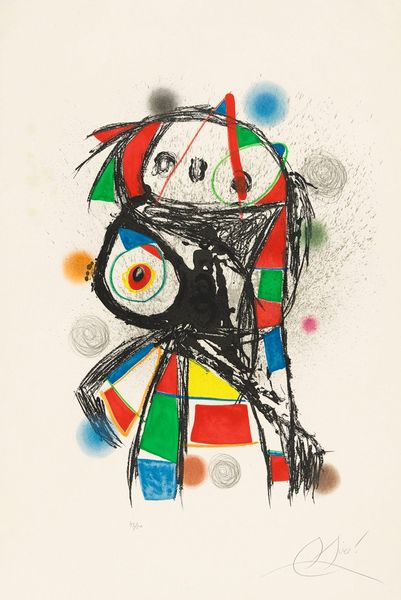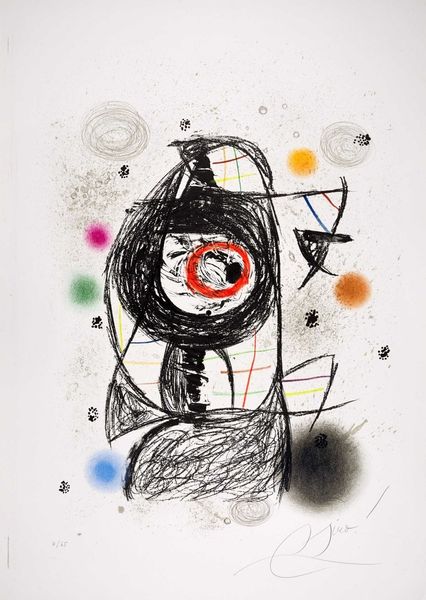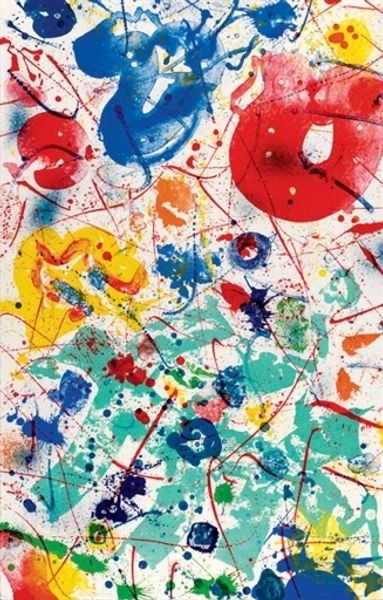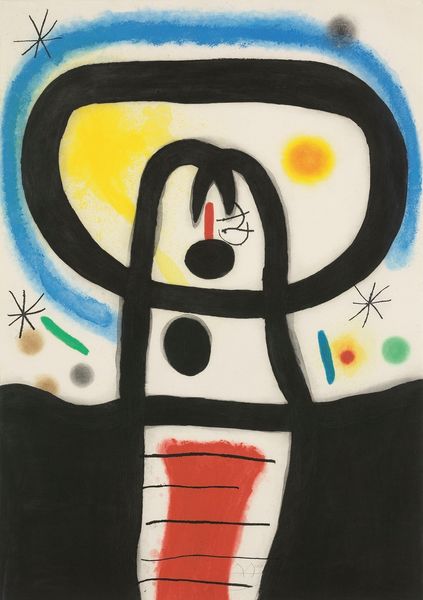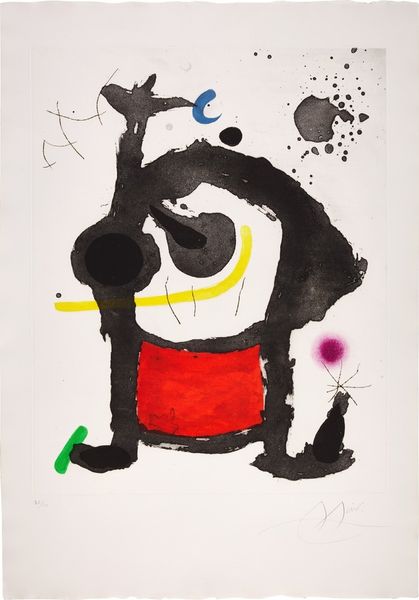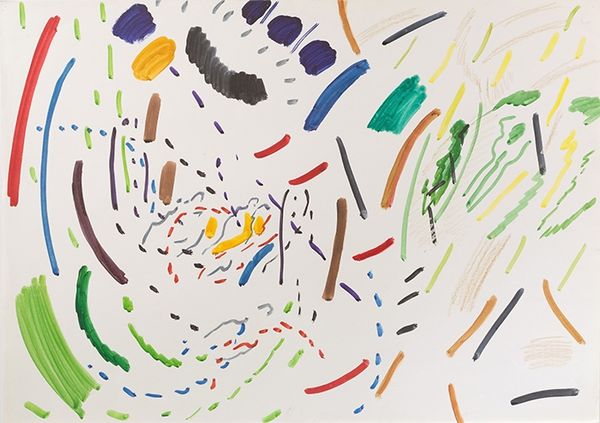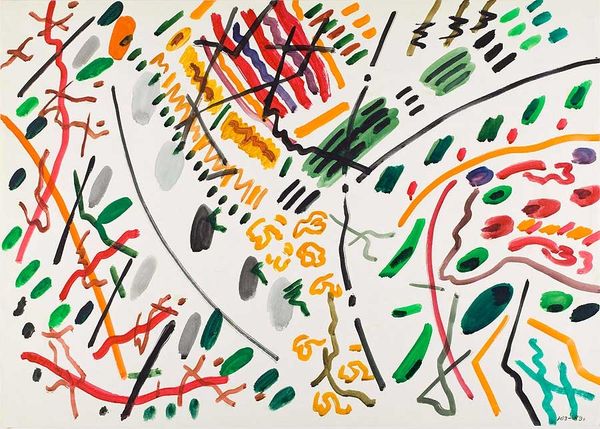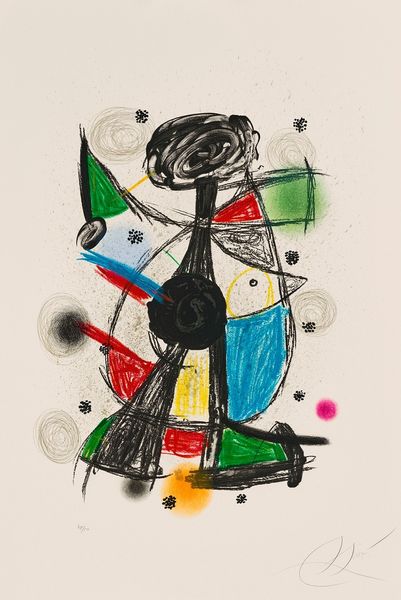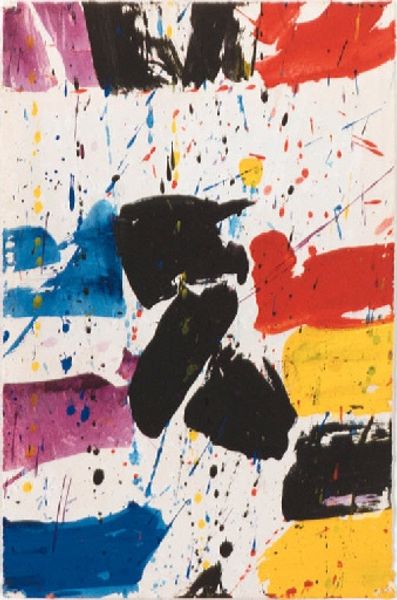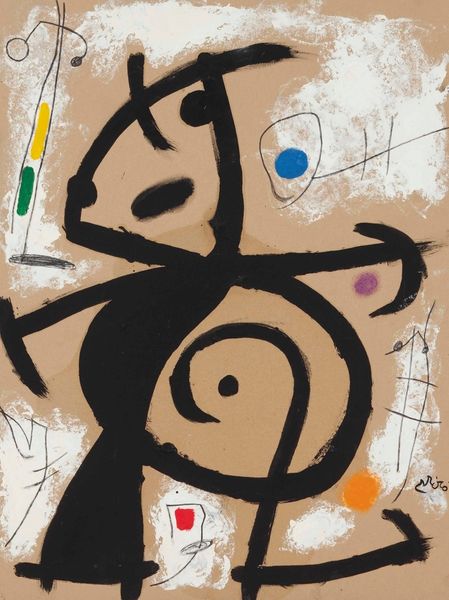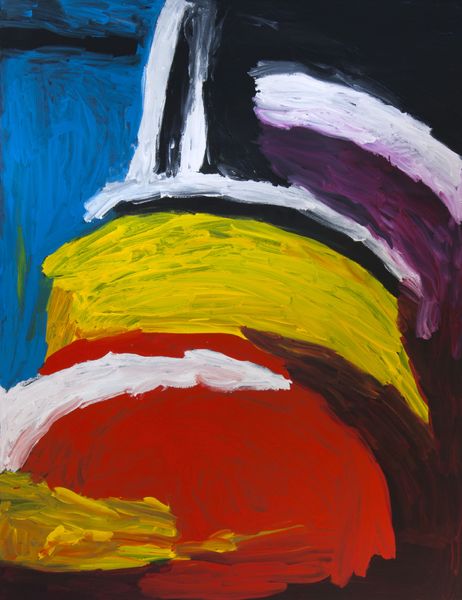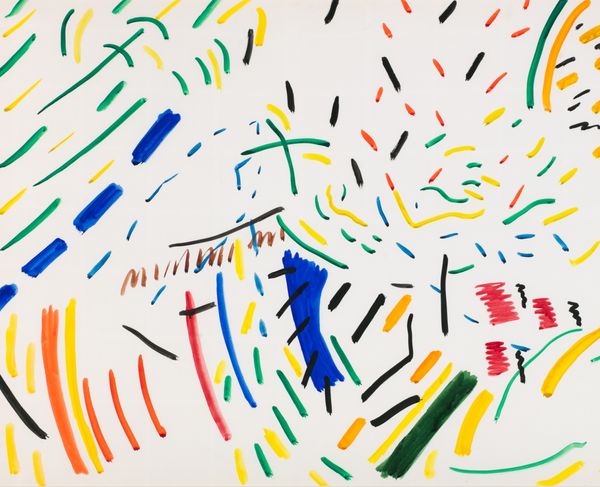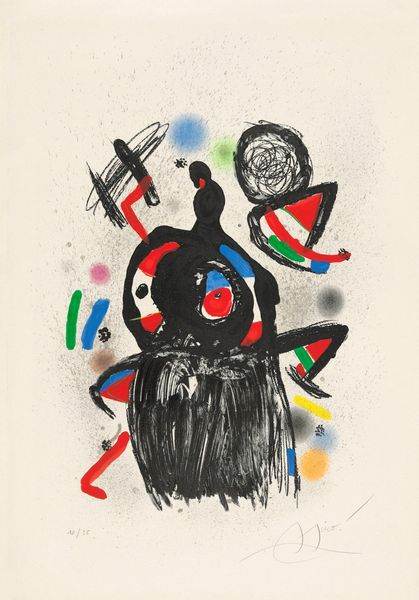
Copyright: Modern Artists: Artvee
Curator: This is Joan Miró's "Colombine à la Fenêtre," created in 1980 using mixed media. It's a captivating example of his later work. Editor: My first impression? It feels like a playful secret language, a coded message delivered in splashes of color and confident black lines. Like jazz for the eyes. Curator: That's insightful. Consider the historical context. Miró, deeply affected by the Spanish Civil War, often used abstraction to critique societal norms and express resistance to fascism. The seemingly simple shapes carry potent symbolic weight, reflective of his identity. Editor: Right, but beyond politics, I get this overwhelming feeling of…freedom! It's almost childlike in its expressive joy. I imagine Miró just dancing with the brush, letting the colors lead him. And I keep noticing these seemingly unfinished aspects in the linework, creating something raw and immediate, a conversation happening right there on the canvas. Curator: That’s a valid interpretation. His departure from purely representational forms coincided with a broader questioning of traditional power structures in postwar Europe. His use of these bold colors can be viewed through a lens of cultural defiance against oppressive regimes. Consider his use of line. There's a controlled chaos, or raw creative energy, echoing Art Informel. Editor: Yeah! And I love how these distinct shapes sort of suggest, rather than define, Colombine’s presence. Is she looking in or looking out of the window? Does it even matter? For me, it taps into something very intuitive about existing on this plane! Curator: It is worth noting the symbolism Miró employed frequently throughout his works. Stars, birds, ladders – which relate to hope, the ethereal, and human ambition – recur and speak to humanity’s potential. How these intersect and differ given various intersectional positions is a point of fruitful academic discussion today. Editor: Totally! You can feel how much the art world and society changed across the course of Miró’s lifetime. “Colombine à la Fenêtre" reflects how art continued to transform and respond, up until 1980! Wow, time really is an incredible artist. Curator: Absolutely, and situating it within the timeline of 20th century artistic expression enables us to appreciate Miró’s enduring impact, politically and stylistically. Editor: This conversation really makes the shapes sing! Thanks.
Comments
No comments
Be the first to comment and join the conversation on the ultimate creative platform.
